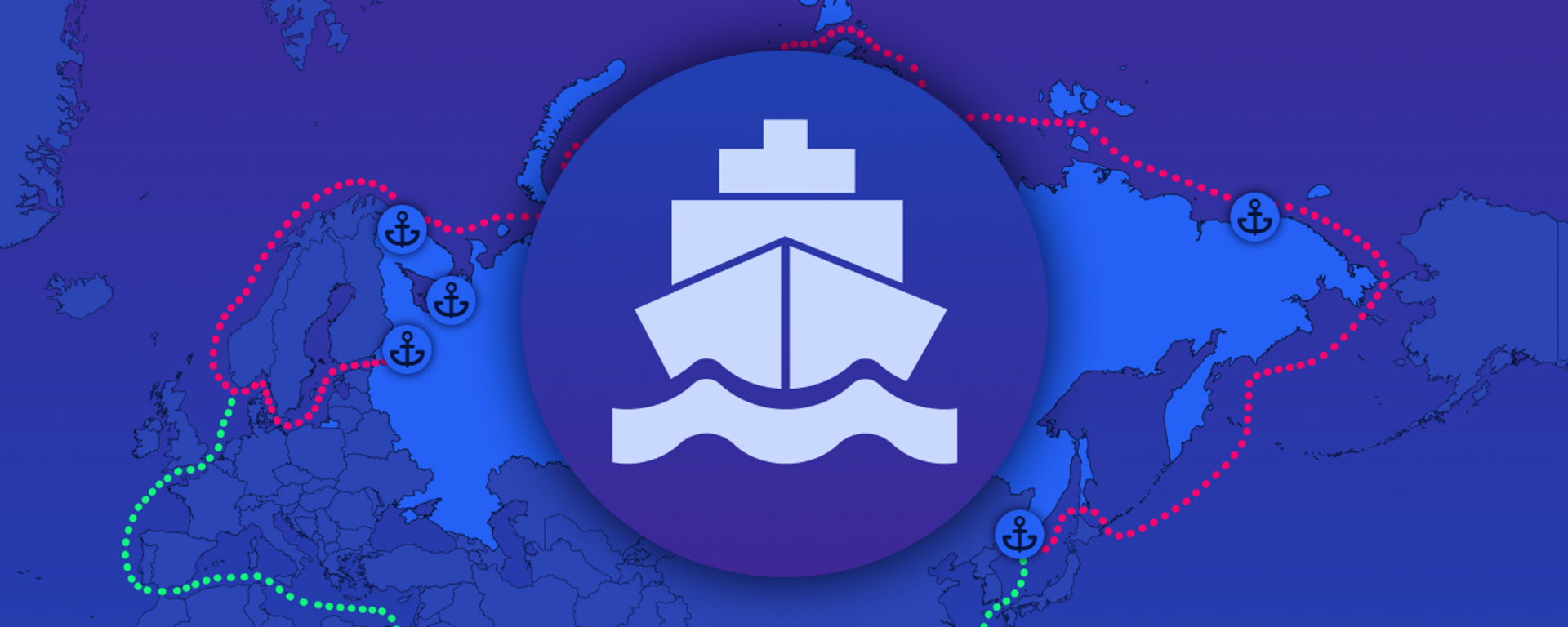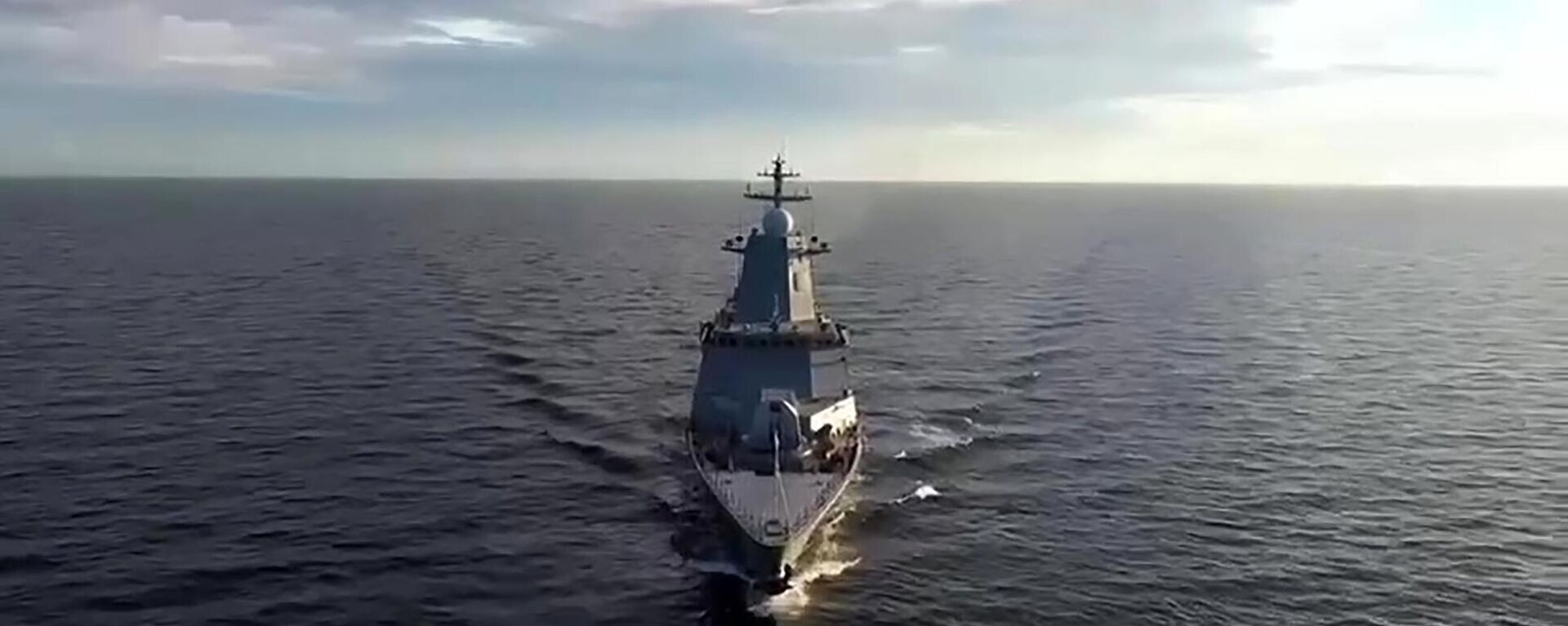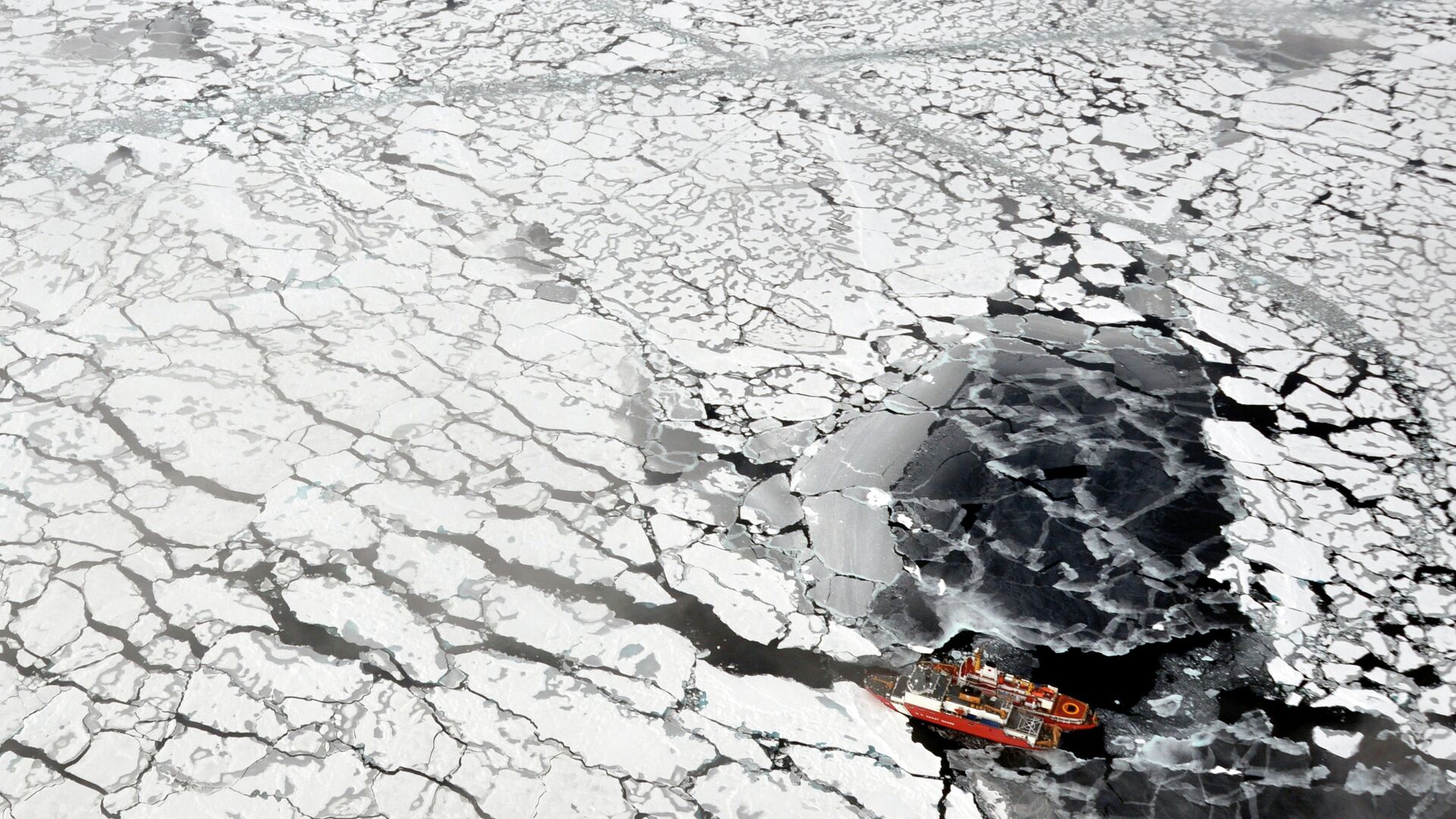https://sputnikglobe.com/20231022/nato-gets-chills-over-prospective-russian-chinese-military-cooperation-in-arctic-1114406420.html
NATO Gets Chills Over Prospective Russian-Chinese Military Cooperation in Arctic
NATO Gets Chills Over Prospective Russian-Chinese Military Cooperation in Arctic
Sputnik International
Russia’s plans to build a major new shipping artery between Asia and Europe through its territorial and exclusive economic zone waters in the Arctic has sparked serious concerns from Washington and its allies, with US officials proposing so-called ‘freedom of navigation’ patrols through the area to prevent Moscow from enjoying sole control.
2023-10-22T12:37+0000
2023-10-22T12:37+0000
2023-10-22T13:13+0000
military
arctic
russia
china
nato
us navy
northern sea route
us
tensions
https://cdn1.img.sputnikglobe.com/img/102135/27/1021352761_0:163:3204:1965_1920x0_80_0_0_71d220b6de18ab2e92603d6ca1a56233.jpg
Growing Russian-Chinese cooperation in the Arctic poses risks to the Western alliance, Admiral Rob Bauer, chairman of NATO’s Military Committee, has said.“We cannot be naive and expect these new routes to solely be used by commercial vessels,” Bauer said separately in a speech before the Arctic Circle Assembly conference in Reykjavik, Iceland on Saturday. “China’s intentions for the region remain opaque,” he warned.The admiral didn’t elaborate on how Chinese warships operating in Russian waters in the Arctic would be a threat to NATO, or how they might pose any more of a threat to the alliance than the NATO military infrastructure which the bloc has set up in dozens of countries around the world, including in nations bordering on Russia and China.In any event, Nikolay Korchunov, Russia’s top Arctic affairs diplomat, told Sputnik last month that Russia can credibly assure the security of its Northern Sea Route independently, without the need for any assistance from partners. Russia will respond to any efforts by NATO to reinforce its military capabilities in the Arctic with “a set of necessary measures, including preventative ones,” Korchunov stressed.China has announced readiness to cooperate with Russia in the Arctic "based on the principles of mutual respect, equality and mutual benefit," including in the development of the Northern Sea Route.Moscow recently listed efforts to “preserve peace and stability, enhance environmental sustainability [and] reduce threats to national security in the Arctic” as one of its top foreign policy priorities.For Washington, however, the NSR seems to most closely resemble a potential nightmare, given the incredible geostrategic and economic power that it would bestow upon Moscow due to Russia’s control of the prospective route’s waters.Russia has invested heavily in the development of the NSR, with its fleet of 40+ nuclear and diesel-powered icebreakers larger than the rest of the world combined. Russia has also built and repaired over two dozen ports and airfields in the Arctic region, set up a new Northern Arctic military command, and created new regional air defense and search and rescue capabilities.The US Navy characterizes the NSR as an attempt by Russia to create an “unlawful regulation of maritime traffic,” with Washington threatening to sail South China Sea-style “freedom of navigation” patrols through Russian-claimed waters in the Arctic. Actually doing so may be difficult, since the US currently has only a single heavy icebreaker, and one medium one, in service. The US Coastguard plans to receive three heavy and three medium icebreakers at some point in the future, with the deadline for delivery of the first in the series recently pushed back to 2028 after US designers and engineers realized that they would have to “relearn” the technique of reliably producing thick hardened steel to reinforce Arctic-going ships’ hulls.
https://sputnikglobe.com/20231019/northern-sea-route---key-to-global-trade-1114321168.html
https://sputnikglobe.com/20230825/how-new-logistics-routes-will-ensure-brics-security-1112896788.html
arctic
russia
china
Sputnik International
feedback@sputniknews.com
+74956456601
MIA „Rossiya Segodnya“
2023
News
en_EN
Sputnik International
feedback@sputniknews.com
+74956456601
MIA „Rossiya Segodnya“
Sputnik International
feedback@sputniknews.com
+74956456601
MIA „Rossiya Segodnya“
nato, russia, arctic, united states, china, asia, europe, northern sea route, militarization, danger, risks, rob bauer
nato, russia, arctic, united states, china, asia, europe, northern sea route, militarization, danger, risks, rob bauer
NATO Gets Chills Over Prospective Russian-Chinese Military Cooperation in Arctic
12:37 GMT 22.10.2023 (Updated: 13:13 GMT 22.10.2023) Russia’s plans to build a major new shipping artery between Asia and Europe through its territorial and exclusive economic zone waters in the Arctic has sparked serious concerns from Washington and its allies, with US officials proposing so-called “freedom of navigation” patrols through the area to prevent Moscow from enjoying sole control.
Growing Russian-Chinese cooperation in the Arctic poses risks to the Western alliance, Admiral Rob Bauer, chairman of NATO’s Military Committee, has said.
“We know there are military scientists on board these ships,” Bauer
told a US business media outlet, referring to China’s increasing commercial and scientific interest in Russia’s Northern Sea Route project. “They haven’t said they won’t go there militarily.”
“We cannot be naive and expect these new routes to solely be used by commercial vessels,” Bauer said separately in a speech before the Arctic Circle Assembly conference in Reykjavik, Iceland on Saturday. “China’s intentions for the region remain opaque,” he warned.
Bauer added that Russia’s "substantial" air and naval capabilities in the Arctic in and of themselves are a potential danger, and that NATO will need to prepare for a conflict in the region, even if it’s not expected to become a potential flashpoint “immediately.”
The admiral didn’t elaborate on how Chinese warships operating in Russian waters in the Arctic would be a threat to NATO, or how they might pose any more of a threat to the alliance than the NATO military infrastructure which the bloc has set up in dozens of countries around the world, including in nations bordering on Russia and China.
In any event, Nikolay Korchunov, Russia’s top Arctic affairs diplomat,
told Sputnik last month that Russia can credibly assure the security of its Northern Sea Route independently, without the need for any assistance from partners. Russia will respond to any efforts by NATO to reinforce its military capabilities in the Arctic with “a set of necessary measures, including preventative ones,” Korchunov stressed.
China has announced
readiness to cooperate with Russia in the Arctic "based on the principles of mutual respect, equality and mutual benefit," including in the development of the Northern Sea Route.

19 October 2023, 17:55 GMT
Moscow recently listed efforts to “preserve peace and stability, enhance environmental sustainability [and] reduce threats to national security in the Arctic” as one of its
top foreign policy priorities.
Russia’s 5,550+ km Northern Sea Route – stretching from the Barents Sea in the west to the Bering Sea in the east, is turning the dream of linking Europe to Asia via a major new trade artery that could shave nearly 9,000 km off existing routes into a reality.
For Washington, however, the NSR seems to most closely resemble a potential nightmare, given the incredible geostrategic and economic power that it would bestow upon Moscow due to Russia’s control of the prospective route’s waters.
Russia has invested heavily in the development of the NSR, with its
fleet of 40+ nuclear and diesel-powered icebreakers larger than the rest of the world combined. Russia has also built and repaired over two dozen ports and airfields in the Arctic region, set up a new Northern Arctic military command, and created new regional air defense and search and rescue capabilities.

25 August 2023, 18:56 GMT
The US Navy
characterizes the NSR as an attempt by Russia to create an “unlawful regulation of maritime traffic,” with Washington threatening to sail South China Sea-style “freedom of navigation” patrols through Russian-claimed waters in the Arctic. Actually doing so may be difficult, since the US currently has only a single heavy icebreaker, and one medium one, in service. The US Coastguard plans to receive three heavy and three medium icebreakers at some point in the future, with the deadline for delivery of the first in the series recently pushed back to 2028 after US designers and engineers
realized that they would have to “relearn” the technique of reliably producing thick hardened steel to reinforce Arctic-going ships’ hulls.




